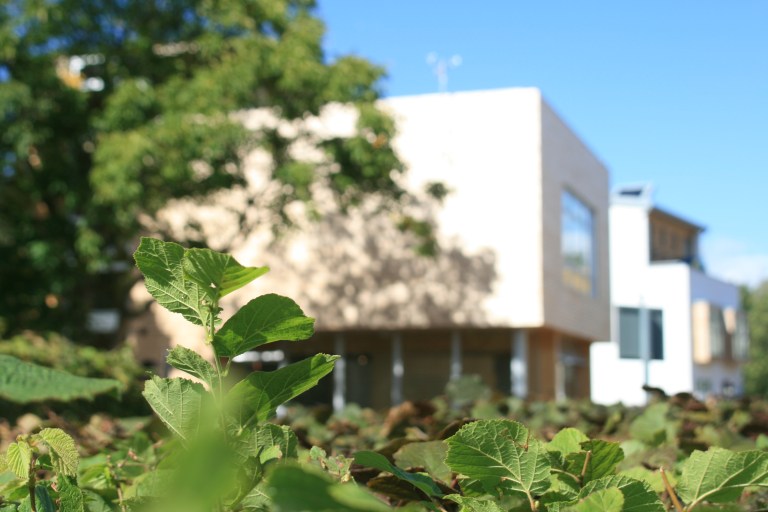Healthy planning policy and monitoring in Southwark and Lambeth

|
Built environment professionals are increasingly interested in the relationship between places and health. Many guidance documents are available to inform planning policy-makers of the importance of planning and health, yet there remains uncertainty about exactly ‘what works’ with regard to specific design and policy measures. In part, this has been explained by a lack of clear causal evidence to inform practice. However competing policy priorities and differing cultures of practice and evidence use across health and planning also play a role.
Despite these challenges, there is a growing desire to integrate design and planning measures which are known to support health and wellbeing into policies and projects. Planners want to know what has worked elsewhere and what evidence can be used to support local policies.
The research focused on three key health themes in Southwark and Lambeth which are widely relevant in the UK and internationally: social isolation, obesity (physical activity/healthy eating) and access to health services. Like many aspects of the urban environment’s impact on health, there are many interconnections across these topic areas. The findings from academic research, consultation activities and policy examples often do not correspond to separate policy domains because of these overlaps. This is particularly notable with two of the focus areas for this review – social isolation and physical activity – which are both influenced by similar characteristics of the urban environment. In some ways, this is an advantage because policies can have multiple co-benefits. For example, increasing walkability through urban design may improve physical activity, increase social engagement and reduce local carbon emissions.
Planning policies alone will not address complex health issues like social isolation and obesity. As is often the case in urban planning and public health, officers will need to work across departments in the council and with other public and private stakeholders to integrate built environment solutions with other health promotion measures. Furthermore, solutions from one neighbourhood or research study may not be applicable more widely, depending on local context. There is great value in engaging local communities to explore their views of local problems and assets. This can ensure that policies and design measures respond to local needs, resulting in better outcomes.
[edit] About this article
This article first appeared in March 2019 on the website of the Building Research Establishment (BRE) Group and can be accessed here.
[edit] Related articles on Designing Buildings Wiki
- Accessibility in the built environment.
- Accessibility index.
- Access audit.
- Accessible London.
- Approved document M.
- Balance for Better: Why lack of diversity is an issue for everyone.
- Building Regulations.
- Changing lifestyles.
- Equal opportunities policy.
- Equality Act.
- Essential principles, Creating an accessible and inclusive environment.
- Inclusive design.
- Ramps.
- Special educational needs: an analysis of the necessities for inclusion
- Stairlift.
- The role of the engineer in creating inclusive cities.
Featured articles and news
The UK's Modern Industrial Strategy: A 10 year plan
Previous consultation criticism, current key elements and general support with some persisting reservations.
Building Safety Regulator reforms
New roles, new staff and a new fast track service pave the way for a single construction regulator.
Architectural Technologist CPDs and Communications
CIAT CPD… and how you can do it!
Cooling centres and cool spaces
Managing extreme heat in cities by directing the public to places for heat stress relief and water sources.
Winter gardens: A brief history and warm variations
Extending the season with glass in different forms and terms.
Restoring Great Yarmouth's Winter Gardens
Transforming one of the least sustainable constructions imaginable.
Construction Skills Mission Board launch sector drive
Newly formed government and industry collaboration set strategy for recruiting an additional 100,000 construction workers a year.
New Architects Code comes into effect in September 2025
ARB Architects Code of Conduct and Practice available with ongoing consultation regarding guidance.
Welsh Skills Body (Medr) launches ambitious plan
The new skills body brings together funding and regulation of tertiary education and research for the devolved nation.
Paul Gandy FCIOB announced as next CIOB President
Former Tilbury Douglas CEO takes helm.
UK Infrastructure: A 10 Year Strategy. In brief with reactions
With the National Infrastructure and Service Transformation Authority (NISTA).
Ebenezer Howard: inventor of the garden city. Book review.
The Grenfell Tower fire, eight years on
A time to pause and reflect as Dubai tower block fire reported just before anniversary.
Airtightness Topic Guide BSRIA TG 27/2025
Explaining the basics of airtightness, what it is, why it's important, when it's required and how it's carried out.
Construction contract awards hit lowest point of 2025
Plummeting for second consecutive month, intensifying concerns for housing and infrastructure goals.
Understanding Mental Health in the Built Environment 2025
Examining the state of mental health in construction, shedding light on levels of stress, anxiety and depression.






















